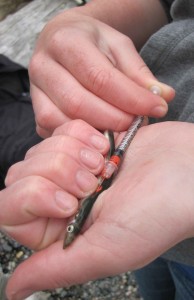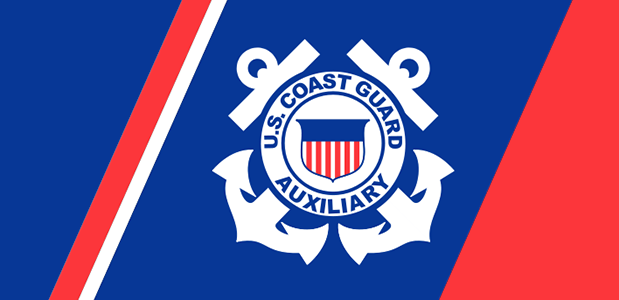— from Russel Barsh —
If you have taken a ferry some time in the last few weeks, you have probably seen large rafts of cormorants, seagulls, and possibly some Marbled Murrelets in the channels between Orcas, Shaw and Lopez islands, often dipping and diving excitedly. What brings these birds together?
The seabirds’ shared interest is Pacific Sandlance, a silver and gold fish about the size and shape of a pencil that congregates and spawns from December to February in our waters. More streamlined than herring or smelt, Sandlance grow very quickly and appear to feed chiefly on copepods, fast-swimming crustaceans smaller than the period at the end of this sentence that may account for as much as half of all animal biomass in the oceans. And copepods are oily and reproduce year-round—a fine diet for anything fast enough to catch them. As Sandlance feast on copepods they grow quite oily as well. Sandlance have nearly as much fat and as many calories as herring, and when dried can burn like matches (but they are not the same as the Eulachon or Candlefish that run in the Fraser River).
But while herring congregate in the spring, Sandlance spawn in winter, and move into shallower water in spring and summer, making Sandlance a perfect feast for the birds that spend their winter in the islands, and nest in spring. Indeed, Sandlance also appear to make up more than half of the diet of the juvenile salmon that migrate through our waters in the spring and summer.
With Sandlance contributing so much to the diets of salmon and seabirds, it seems obvious that we should be doing everything possible to protect them. The catch is that we know relatively little about Sandlance life histories. Some of them spawn on beaches, but others may spawn in deeper water. Our Salish Sea Sandlance may even be more than one species or sub-species, with different reproductive patterns, as scientists have observed in the Sandlance of the western Pacific and the north Atlantic. Until we know more, we can only guess at how human activity affects the abundance of Sandlance.
Kwiáht will be testing custom built gear this winter, designed to catch larval fish in very fast surface tows. We are also studying the genetic diversity of island Sandlance populations, and investigating the possibility that they are more than one species. In the mean time, the seabirds are feasting!
**If you are reading theOrcasonian for free, thank your fellow islanders. If you would like to support theOrcasonian CLICK HERE to set your modestly-priced, voluntary subscription. Otherwise, no worries; we’re happy to share with you.**









Love these kinds of articles. Would be great to see some articles on grazing the SJIs…eating wild plants.
Atw